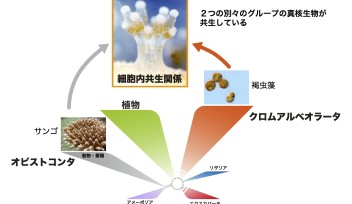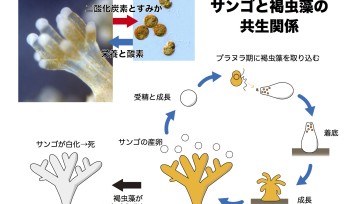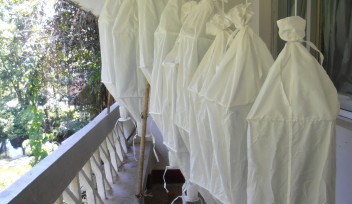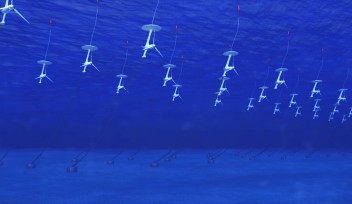Measurement of salt-induced action potential

The nerve cell that senses salty taste is present in the head of C. elegans, and its sensillium is exposed to the environment at the tip of its nose. A small number of nerve cell bodies are excised out from the animal’s brain through a tiny hole made by incision of an extremely small needle tip. Responses of the nerve cell to salt stimulation of the nose tip are measured by a recording electrode toughed to the nerve cell body taken out from the brain. Professor Jeff Wickens, head of the Neurobiology Research Unit, said, "Unlike complex nervous systems like mouse brains, C. elegans has a very simple nervous system consisting of 302 nerve cells. It will lead to better and efficient understandings of how more complex neural circuits function," he emphasizes the usefulness of the research using C. elegans.
The nerve cell that senses salty taste is present in the head of C. elegans, and its sensillium is exposed to the environment at the tip of its nose. A small number of nerve cell bodies are excised out from the animal’s brain through a tiny hole made by incision of an extremely small needle tip. Responses of the nerve cell to salt stimulation of the nose tip are measured by a recording electrode toughed to the nerve cell body taken out from the brain. Professor Jeff Wickens, head of the Neurobiology Research Unit, said, "Unlike complex nervous systems like mouse brains, C. elegans has a very simple nervous system consisting of 302 nerve cells. It will lead to better and efficient understandings of how more complex neural circuits function," he emphasizes the usefulness of the research using C. elegans.
Copyright OIST (Okinawa Institute of Science and Technology Graduate University, 沖縄科学技術大学院大学). Creative Commons Attribution 4.0 International License (CC BY 4.0).
Tags














